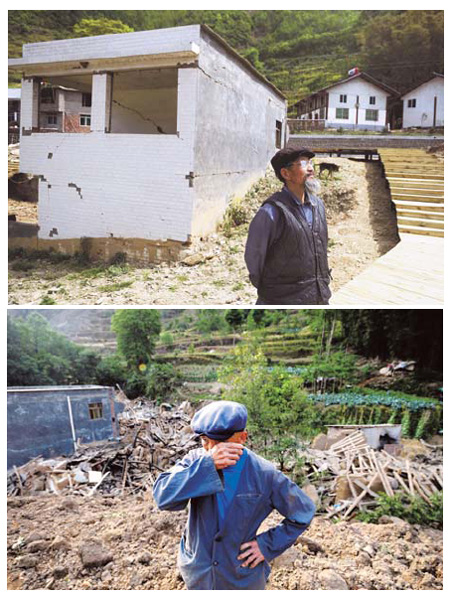Sichuan lessons applied in Yushu
 |
|
Top: Yang Linsheng, 80, stands in front of his new home in Qingchuan, Sichuan province. Below: Yang Linsheng, grieves amid the debris of his house shortly after the earthquake in 2008. |
Sheng Yi, head of the Sichuan Academy of Social Sciences' macroeconomic and industrial institute for economic research agreed and said: "In the past, when it was hard to tell the extent of a province's involvement in a region, much of the aid was arbitrary. All similar forms of aid since (Sichuan) have used concrete indicators so that people can examine exactly what has been done and what hasn't.
"Now you can lay it all out on a table and compare things. It's only when we start comparing can we really achieve progress," he said.
Sheng acknowledged that an important lesson from the Sichuan disaster is that earthquake-ravaged cities and towns often tend to passively wait for aid.
"They should be more vocal because this is essentially a process of mutual learning, negotiation and compromise," he said. "Ultimately though, the recipient regions benefit. The fact that Xinjiang has adopted this model is testimony of its success in Sichuan."
 0
0 







Go to Forum >>0 Comments